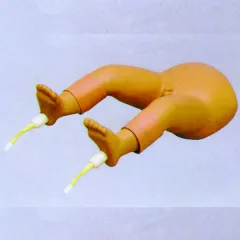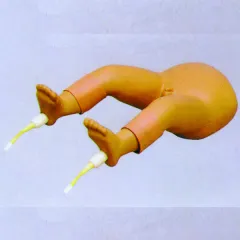The reason why the infant bone marrow aspiration model has become an important part of medical teaching AIDS is mainly based on the following reasons:
First, highly simulation, improve the teaching effect
The infant bone marrow puncture model adopts advanced simulation technology, which can highly simulate the real anatomical structure and physiological characteristics of infants. This allows the medical staff to feel similar tactile and visual effects to the real operation when operating on the model, thus deepening the understanding and memory of the operation details. This highly simulated teaching method helps to improve the teaching effect and enable medical staff to master the bone marrow puncture technology faster.
Second, safe and controllable, reduce risks

In medical education, there is a great risk of directly performing bone marrow puncture operations on real babies, which may not only bring unnecessary pain and injury to babies, but also may cause medical disputes. The baby bone marrow puncture model provides a safe, controlled simulation environment that allows healthcare professionals to practice repeatedly without harming patients. This greatly reduces operational risks and ensures the safety of both doctors and patients.
Third, can be reused, cost saving
The infant bone marrow puncture model has the characteristics of reusable, which saves the teaching cost to a certain extent. Traditional teaching methods often require a large number of real patients or animal experiments for operational training, which not only increases the cost of teaching, but also may be limited by ethics and resources. The model can be used repeatedly to meet the needs of multi-person-times and multi-rounds of teaching, thus improving the utilization efficiency of teaching resources.
Fourth, easy to operate, improve skills
The design of the infant bone marrow puncture model takes into account the convenience of the actual operation, so that the medical staff can easily perform the puncture operation. The simulated tibia, skin and other parts on the model can be replaced, and the pinholes on the bone surface after puncture can be filled with sealing mud for continued use. This design not only extends the service life of the model, but also makes it easy for the medical staff to practice many times, thereby improving their operational skills.
In summary, the infant bone marrow puncture model has become an indispensable part of medical teaching AIDS due to its characteristics of high simulation, safe and controllable, reusable, easy operation and promoting teaching innovation.

